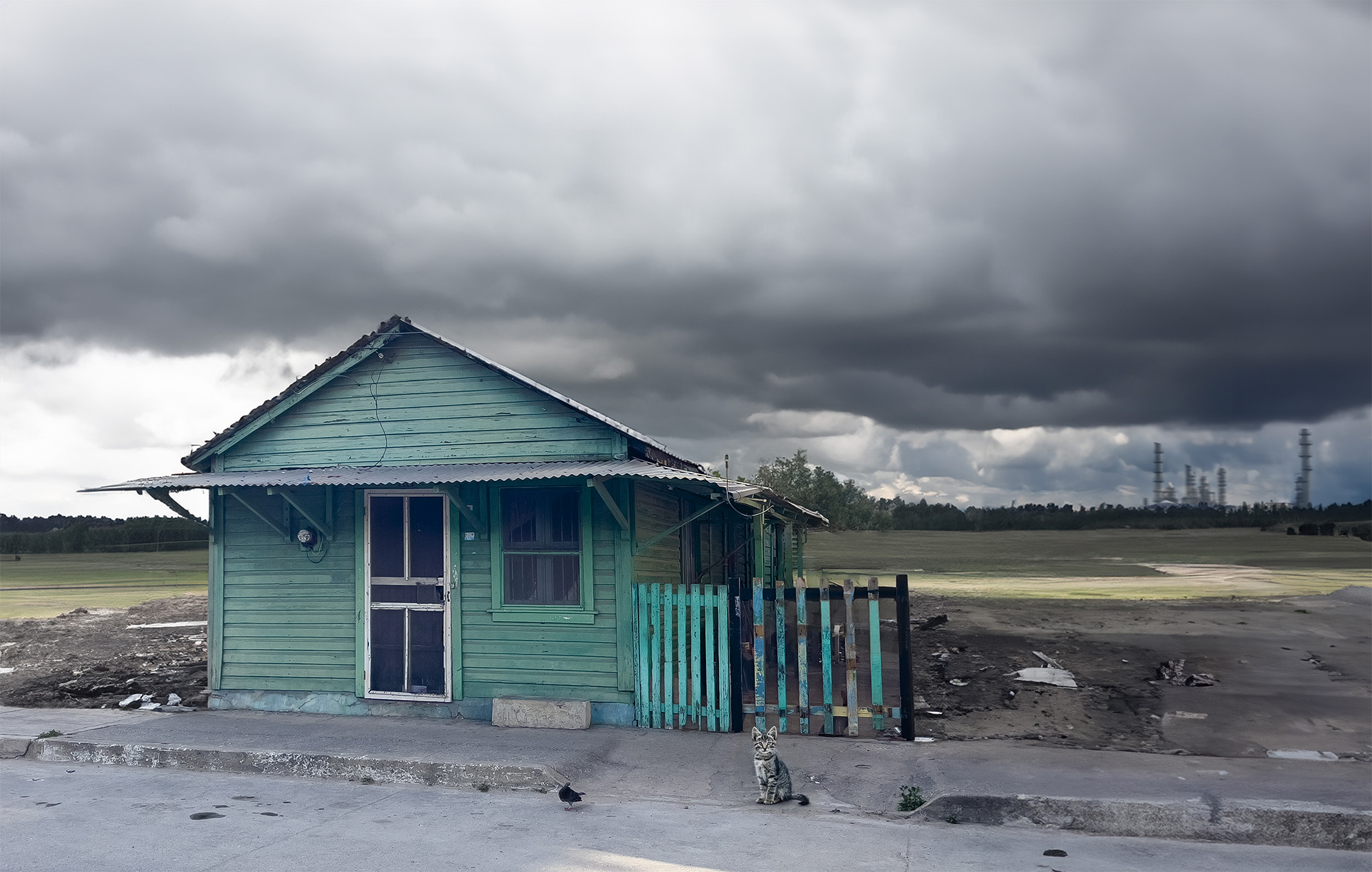Algorithmic Affective Postmemory and Visual Historical Identity: Madero: The City That Is and Is Not
DOI:
https://doi.org/10.54104/nodo.v19n38.2141Keywords:
Algorithmic postmemory, Generative imagery, Artificial intelligence, Visual memory, IdentityAbstract
The emergence of generative imagery produced through artificial intelligence (AI) has reinvigorated the possibility of creating impossible images and, specifically, the creation of nonexistent visual memories from an affective dimension. Through the concept of algorithmic postmemory, this study analyzes the project Madero: the city that is and is not by artist Miguel Ángel Camero (2025), situated in Ciudad Madero (Tampico, Mexico), which intersects the autobiographical recreation of family memory with the reimagining of the city's landscape and historical evolution through its houses and buildings. This project serves as a starting point to articulate an emerging conceptual framework that enables reflection on the hybridization of photography with AI and the creation of hypothetical memories, algorithmic indices and punctums, as well as synthetic visual vestiges. This artistic project provides evidence of critical reflection on images and their historical value as memory and identity. It equally traces an emerging horizon regarding the use of AI in generating affective memory images, and engages in a critical debate about historical reading pacts of images, verisimilitude, and the documentary value of visual discourses of believability in the face of a new technological emergence.
Downloads
References
Barros, S. (2023). IAbuelas [Perfil de Instagram]. Instagram. https://www.instagram.com/iabuelas/
Barthes, R. (1984). La cámara lúcida. Notas sobre la fotografía. Paidós.
Camero, M. Á. (2025a, 30 de marzo). Madero: la ciudad que es y no es [Conferencia virtual]. Zoom.
Camero, M. Á. (2025b). Madero: la ciudad que es y no es. Documento propio compartido por el artista.
Del Castillo, C. (2024, 16 de mayo). Inteligencia artificial contra el olvido: un proyecto crea “recuerdos sintéticos” para personas que pierden la memoria. elDiario.es. https://www.eldiario.es/tecnologia/inteligencia-artificial-olvido-proyecto-crea-recuerdos-sinteticos-personas-pierden-memoria_1_11154761.html
Déotte, J. L. (2012). ¿Qué es un aparato estético? Ediciones Metales Pesados.
Derrida, J. (1997). Mal de archivo: una impresión freudiana. Trotta.
Didi-Huberman, G. (2012). Arde la imagen. Ediciones Ve.
Domestic Data Streamers. (2023). Synthetic Memories [Proyecto de investigación]. https://www.syntheticmemories. net/research/
Eldagsen, B. (2022). Pseudoamnesia: The Electrician [Proyecto artístico]. https://eldagsen.com/work/pseudoamnesia -the-electrician/
Flusser, V. (2006). Towards a philosophy of photography. Reaktion Books.
Flusser, V. (2012). Into the universe of technical images. University of Minnesota Press.
García, P. (2023). Capturing the mind’s eye: How a Barcelona- based studio is exploring the intersection of memory, art, and technology. The Atlantic Dialogues, 1, pp. 45-62.
González, R. (2024, 6 de noviembre). Miguel Ángel Camero reimagina la urbe petrolera. El Sol de Tampico. https://www.elsoldetampico.com.mx/circulos
Hirsch, M. (2012). The generation of postmemory: Writing and visual culture after the Holocaust. Columbia University Press.
MacMasters, M. (2023, 22 de septiembre). Proyecto con IA gana uno de los premios de 20 Bienal del Centro de la Imagen. La Jornada. https://www.jornada.com.mx/noticia/2023/09/22/cultura/proyecto-con-ia-gana-uno-de-los-premios-de-20-bienal-del-centro-de-la-imagen-1981
Martín Prada, J. (2025). AI-based generative image production systems in the artistic problematisation of the past: the thematisation of memory and temporality in “AI art”. AI & Society. https://doi.org/10.1007/s00146-024-02163-z
Mavropoulou, M. (2023). Imagined Images [Proyecto artístico]. https://www.mariamavropoulou.com/imagined-images
Pereira, J. (2024). Con la carne desnuda. Diarios de María del Pilar 1973-1985. Lapsus Multimedia.
Rancière, J. (2009). El reparto de lo sensible. Estética y política. LOM Ediciones.
Refik Anadol Studio. (2017). Archive Dreaming [Instalación de arte digital]. https://refikanadol.com/works/archive-dreaming/
Richard, N. (1994). La insubordinación de los signos: cambio político, transformaciones culturales y poéticas de la crisis. Editorial Cuarto Propio.
Rivas San Martín, F. (2022). Una genealogía queer de los algoritmos computacionales [Tesis doctoral, Universitat Politècnica de València].
Rivas San Martín, F. (2024). Un archivo queer inexistente. Agenda Kuir, 11, pp. 160-167.
Séptimo, R. (2023). Exhumar la Memor.IA [Proyecto artístico]. https://www.rogelioseptimo.com/exhumar-la-memor-ia/
Shobeiri, A. (2024). Virtual photography: Artificial intelligence, in-game, and extended reality. Transcript Verlag.
Vallejo, M. (2023, 31 de julio). IAbuelas: cómo imaginar el rostro de un desaparecido. Vist Projects. https://vistpro jects.com/iabuelas-imaginar-rostro-desaparecido/
Zylinska, J. (2023). The perception machine: Our photographic future between the eye and AI. MIT Press.

Downloads
Published
-
Abstract301
-
PDF (Español)190
How to Cite
Issue
Section
License
Copyright (c) 2025 Jacob Bañuelos Capistrán

This work is licensed under a Creative Commons Attribution-NonCommercial-ShareAlike 4.0 International License.



 Portal de Ciencia Abierta
Portal de Ciencia Abierta